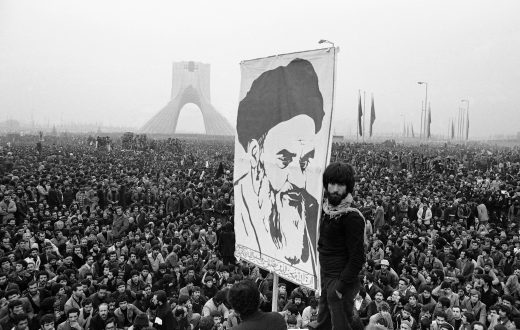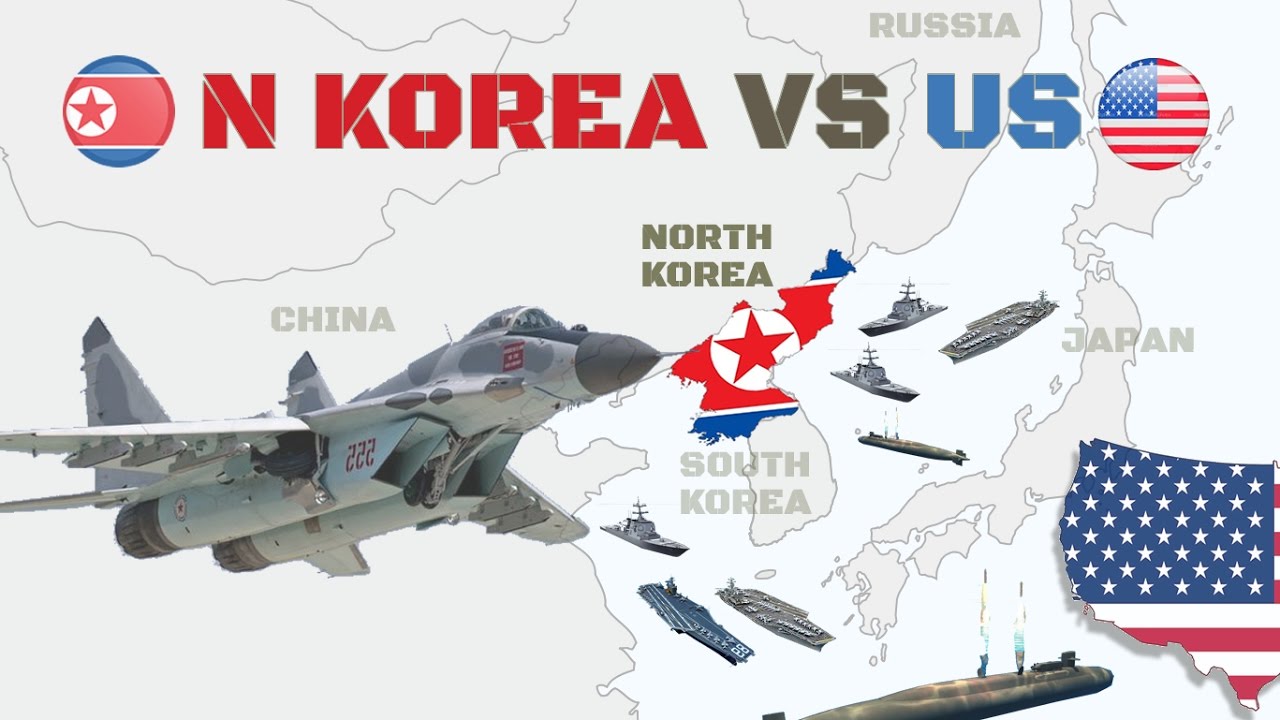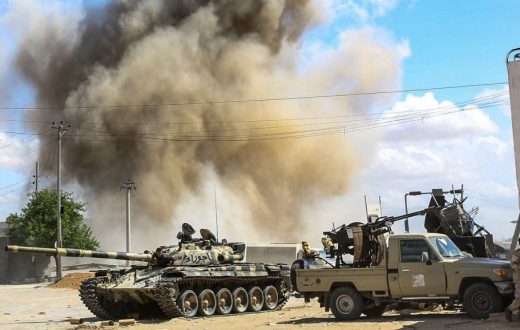Forecast
- Political and social turbulence in the Middle East will continue to foster the rise of terrorist groups, some of which will have the motivation and capability to attack U.S. interests.
- As the United States looks to address these threats, it will attempt to find a strategy that is both effective and sustainable.
- To this end, the United States will continue to provide training, intelligence and logistics support to local actors fighting against terrorist groups.
- To supplement these efforts, however, the United States will have to steadily increase direct ground combat personnel — relying heavily on special operations forces.
Analysis
The Middle East’s traditional power structures are crumbling, paving the way for new groups and threats to rise from the ruins. The United States, as a result, will be forced to reconsider its strategy in the region. Just as al Qaeda’s setbacks enabled the Islamic State to flourish, so, too, will other terrorist groups move to fill the void created by the Islamic State’s eventual decline. Terrorism will pose a threat to U.S. national security for the foreseeable future, and policymakers in Washington have no choice but to pursue more sustainable ways to counter it. The United States will ultimately shift its tactics in the region, striking a balance between empowering local security forces and selectively deploying specially trained and equipped forces in its attempt to tip the scales in the war against militant Islam.
Rebuilding a Region
The Middle East has been shaped by the wars, colonialism and post-Cold War fragmentation of the last century into a collection of states governed by militaries and monarchies. Yet, over the past decade a wave of foreign interventions and domestic social uprisings has torn many of these political structures away. At the same time, powerful third parties such as the United States have withdrawn from their alliances in the region, undermining the balance of power that their presence often ensured between the Middle East’s major state and non-state actors.
Amid these dramatic upheavals, regional concentrations of power are emerging in Turkey, Iran, Egypt, Israel, Saudi Arabia and the Gulf Cooperation Council. But the swathes of land between them remain mired in chaos as the societies left behind grapple with the ethnic and sectarian divisions that underlie the region. Nowhere is this more evident than in Iraq and Syria.

As the Middle East continues to break itself apart — reassembling the pieces may take decades — militant groups will take advantage of the resulting power vacuum to grow and proliferate. And as they increasingly engage with the stronger, more coherent military forces stationed throughout the region, they will use asymmetric tactics like terrorism to level the playing field and extend their reach.
The Global War on Terrorism
The United States did not begin to truly understand the threat that terrorism posed to its homeland until Sept. 11, 2001. In the wake of the attacks, U.S. leaders realized that with the right intent and capability, terrorist groups could successfully target and kill large numbers of American citizens on U.S. soil. To prevent an attack on the scale of 9/11 from happening again, former U.S. President George W. Bush launched a widespread offensive against terrorist groups around the world that he dubbed the Global War on Terrorism.
This name is something of a misnomer. The United States does not, and cannot, attack every terrorist group in the world. It simply does not have the will or the resources to do so. Furthermore, terrorism is a tactic, which by its nature cannot be eradicated. Instead, Washington chose to target transnational groups (and their support networks) that have demonstrated the intent and capability to attack the interests of the United States or its allies through asymmetric means.
This strategy is not tied to any single group, although one organization may pose a greater and more urgent threat than others at certain times. For example, at its inception the strategy largely centered on finding and dismantling the al Qaeda core, held responsible for coordinating the 9/11 attacks. Now that this goal has been largely achieved, the United State’s focus has shifted to the Islamic State, where it will likely remain for the next few years as the U.S.-led coalition works to degrade the jihadist group’s capabilities.
But even if the United States can marginalize the Islamic State, the underlying elements that enabled the group’s rise will not disappear as quickly. As conflicts throughout the Middle East continue to play out, other groups will surface with similar capabilities and intentions. These groups will not necessarily all be Sunni or even religious in nature, like al Qaeda and the Islamic State are. For example, the Marxist Revolutionary People’s Liberation Party-Front has already attacked U.S. targets in Turkey, as have Shiite militias in Iraq.
In the face of such threats to come, it is hard to ignore the suggestion that Washington simply abandon the region. But the Middle East is a strategic supplier of oil to the global market, and the critical link connecting Africa, Asia and Europe. Leaving it to its fate is not an option. Then again, neither is more of the same.
Invasion vs. Desertion
It is increasingly clear that the United States’ approach to eradicating al Qaeda — launching full-fledged invasions, first in Afghanistan and then in Iraq — is not sustainable in the long run. The goal of each ground incursion was to strike the jihadist group within its own safe-havens. While both invasions were successful in some ways, they also failed to decisively eliminate the threat. In Afghanistan, al Qaeda fighters were able to escape across unguarded borders and fade into the difficult surrounding terrain to avoid capture. From there, they adopted a blend of guerrilla tactics and terrorism to wage a protracted war against foreign troops.
In Iraq, remnants of Saddam Hussein’s regime were able to quickly reorganize into a capable insurgency, while local Shiite militias took advantage of Hussein’s destruction to launch attacks of their own. In both cases, U.S. leaders quickly, if begrudgingly, realized that a prolonged force presence would be needed to suppress new threats. While this provided some level of stability to each country, it solved neither Baghdad nor Kabul’s problems entirely. Large numbers of “occupying” troops became the catalyst for increased recruitment into these militant groups, further exacerbating the problem.
Unable to fully destroy its enemies and caught in the middle of a bloody sectarian war, the United States began to look for an exit strategy. Neither it nor its allies could afford to continue deploying huge portions of their militaries to wage wars with no end. By overcommitting in the Middle East, the United States had essentially hamstrung its military capabilities elsewhere in the world.
At the same time, political pressure was building to draw operations in Afghanistan and Iraq to a close. In the midst of a sharp recession, U.S. policymakers were being forced to choose between making deep budget cuts and taking on greater debt to fund conflicts overseas. Meanwhile, the body count steadily rose, and the American public became less and less willing to sacrifice its soldiers to an intangible cause.
And so, U.S. counterterrorism strategy changed. The new goal was to withdraw all forces belonging to the United States and its allies and replace them with assistance from afar. Financial aid, intelligence sharing and logistical support became the West’s primary tools of influence. Yet this approach is also failing. Security in Afghanistan degraded alongside the United States’ eventual drawdown to a small but sustainable footprint. And in Iraq, once all foreign personnel had departed, the absence of capable Western forces and the outbreak of civil war in neighboring Syria enabled al Qaeda in Iraq to transform: First into the Islamic State in Iraq and the Levant and then into the Islamic State.
Finding the Perfect Balance
In light of these developments, the United States has had to adjust its approach once again. Washington and its allies have already halted further troop withdrawals from Afghanistan, expanding their mission timelines and in some cases reversing the decision to further reduce the military footprint on the ground. Meanwhile, the United States has redeployed forces to the Iraq theater — and beyond — in an effort to stabilize the region following the Islamic State’s rapid spread. More recently, Washington pushed a small contingent of U.S. special operations forces into Syria after efforts to train a local proxy force repeatedly failed.
Still, Washington continues to search for the perfect balance between wide-scale invasion and complete disengagement. So far, the attempt to partially re-engage in Iraq and Syria with tangential combat support has either achieved limited success or failed outright. Western-backed forces have regained some territory in Iraq over the past year, but what gains have been made are gradual and costly. On a positive note, though, the strategy of limited engagement is far more sustainable than either of its predecessors.
As the United States settles in for a lengthy battle against the terrorists that wish to attack it, it will continue looking for ways to effectively combat its enemies without outstripping or overcommitting its resources. What we are seeing is a slow tipping of the scales as small portions of direct combat power are added to supplement the combat support of local forces already in place. It is military satisficing.
Ultimately, this hybridized force structure will allow for a combination indirect and direct support across a large portion of the region. On the one hand, Washington will support its local allies with training, intelligence, logistics support and airpower; on the other, it will use small portions of units and special operations forces to shift the tempo of battle in its allies’ favor. This will require SOF to work in concert with other small ground units that can conduct raids, manage the fight, and coordinate a variety of fires including precision guided munitions, artillery, and close-air support. This strategy will inevitably lead to a yearslong commitment — just to address the Islamic State.
While this approach will eventually degrade the Islamic State, the Middle East as a whole will continue to be riven in different directions as new power structures and alliances emerge and gel. This will only incubate more militant groups with a continued goal to challenge the United States and its interest in the region. This in turn will force Washington to stay engaged in the Middle East as military planners shift to the next threat, be it similar to before or entirely different. To bring about an acceptable level of stability — or instability, from the U.S. point of view — will require the commitment of tens of thousands of personnel on the ground and in the skies above the region, for many years to come.







